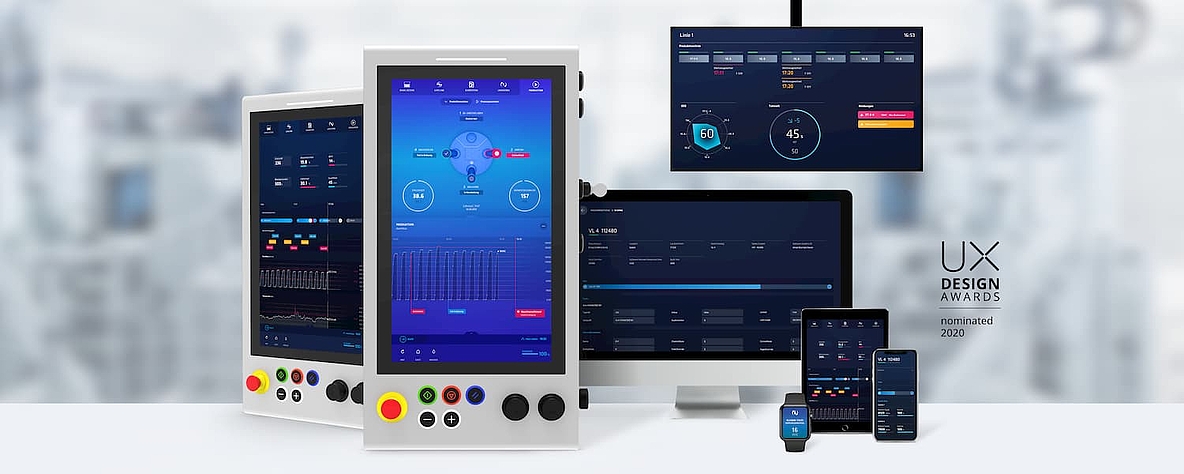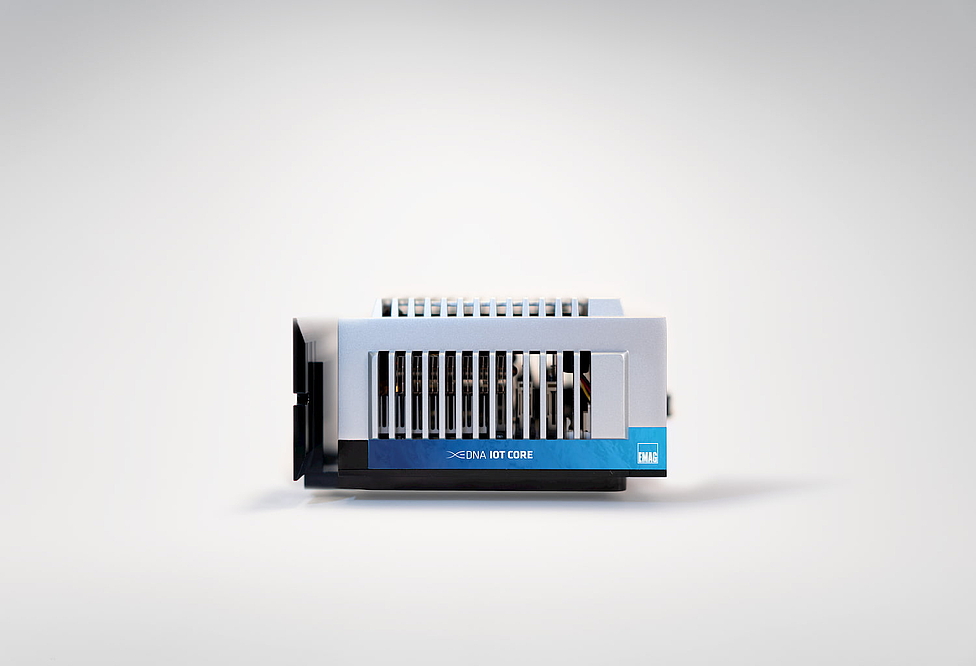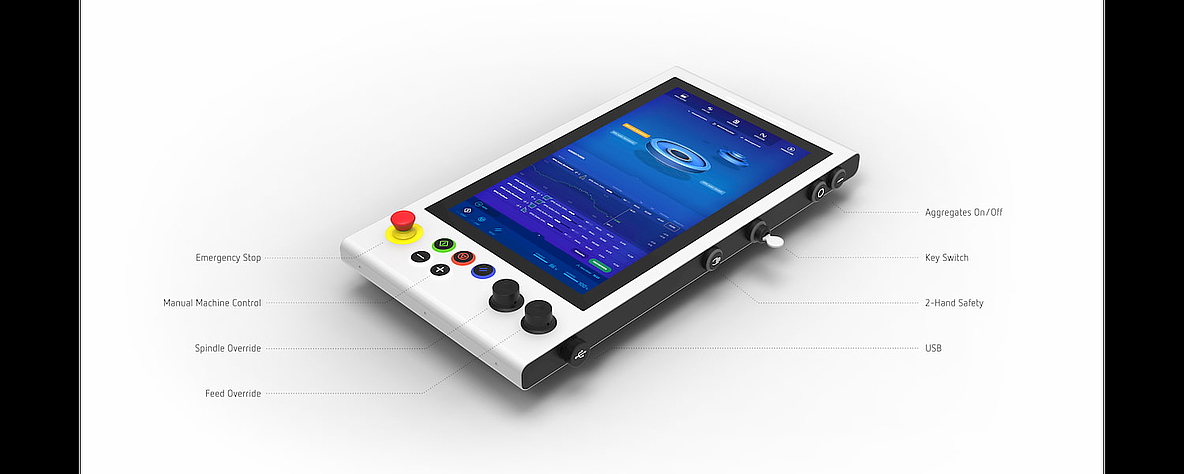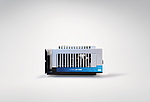10/05/2020 - Oliver Hagenlocher - Press
Red Dot Award for EMAG: AI solution EDNA perfects networking of industrial production
The factories of the future are connected—in every respect: Machines communicate with each other regarding errors or required maintenance, while providing essential information to production planners that can control the machines from one central point. With this system, planners can create intelligent production systems that can manage tasks even more efficiently. With the creation of a new modular ecosystem, that has just won the Red Dot Award (Best of the Best), the EMAG Group has made this vision a reality, simplifying both operation and networking of the machines. Initial applications used by customers have been impressive in demonstrating how the entire production process is made much more transparent and efficient with this system.
Images
Many experts forecast a “chaotic” future for production including constantly changing parts and fluctuating batch sizes, requiring the use of extremely flexible production solutions. In the end, this can also mean that, where five machines used to be necessary for handling different components, there could be only one in the future—capable of doing everything, perfectly connected to the production network. This, however, means that the focus on system operation is greater than ever: It has to be as intuitive, uniform and simple as possible—just like a smartphone—so as not to overwhelm the operator.
One Solution for all EMAG Applications
Extensive networking, self-explanatory operation—with this goal in mind, the EMAG Group started developing EDNA (which stands for EMAG DNA) three years ago, with the help of various partner companies. The entire process was very sophisticated and ambitious, as the EMAG Group consists of many subsidiaries that all specialize in different technologies and applications. Together, they develop complex manufacturing systems provided to a customer entirely from a single source. With that in mind, the envisioned ecosystem had to benefit all EMAG solutions as a uniform operator interface and IoT machine core. “Therefore, we discussed the requirements in a series of workshops and coordinated each development step with experts from the EMAG companies,” explains Peter Strohm, Business Development Manager IoT at EMAG.
OEE is Increasing—“Return on Investment” in One Year
The solution has been available for a while now, and has won over its initial users: feedback is showing that using EDNA significantly increase OEE. “With this research, we estimate that a return on investment is possible after about a year—if the collected data is analyzed and used to plan future actions,” says Strohm. But how exactly are these successes possible?
1. IoT Core: Bridge to the Smart Factory
First, let’s take a look at the EDNA IoT CORE of EMAG, with the diverse options for expanding it with hardware and software components: The EDNA CORTEX software runs on the powerful industrial PC and makes data available using various protocols, such as MQTT and REST, or—in the future—OPC-UA. With EDNA CORTEX, production data is processed, aggregated and analyzed. It is possible to flexibly adapt the scale on which the IPC is used: only locally within a standalone machine, connected to an edge solution of the company or networked with the cloud. At the same time, the solution has a completely modular software architecture that can be implemented in the specific IT infrastructures of the EMAG customers. “The solution is completely open and offers various standard interfaces. Connecting additional sensors, for example vibration sensors, and integrating products from other machine manufacturers is no problem,” emphasizes Strohm.
As a result, users can access a large range of value-added applications. This currently includes the following apps: “Parts Quantity Forecast” (estimated output quantity per shift), “Cycle Time Monitor” (current cycle times of machines or lines), “Smart Tool Change” (information on remaining tool life), “OEE Monitor” (detailed breakdown of current OEE) as well as apps for checking “machine health” (condition of the axes) and “machine status” (traffic light system signaling readiness for operation). “All in all, users get a more comprehensive overview of active production. Another significant point to keep in mind is that many more possibilities will open up in the future,” explains Strohm. “The range of available apps is constantly being expanded and data analysis is becoming more and more comprehensive. And this means: Added value is created for the customer and is immediately noticeable in the form of increased productivity. The approach is future proof and easy to implement.” The latter also applies to the question as to which EMAG machines are compatible with all of this: From retrofitting of virtually any model from the past two decades to integration into new machines, everything is possible. Another feature of EDNA is our new concept for operation using an intuitive HMI, which is now available for the MIND-L 1000 induction hardening machine from EMAG eldec. The roll-out for other machine technologies at other subsidiaries is in progress.
2. Smartphone Like Dashboard
Of course there are questions regarding the usability of the entire approach—and the term “app” is already a good first sign: The front-end design of the EDNA Life Line dashboards is based on modern tablets and smartphones. “Users already know the underlying operating philosophy from their daily lives. This means that they can learn how to use the operating interface much faster, which in turn has a positive effect on process reliability,” explains Ricarda Schuhmann, who is responsible for design and strategy at intuity, one of EMAG’s development partners. A first glance the dashboard immediately confirms this assessment: Data is presented in appealing visualizations in individual widgets. Users can determine what exactly is shown and in which layout. The clear structure pays off—quite literally: Early warnings are signaled for anomalies, the end of tool lives or machine wear. This prevents overlooked rejects and unplanned downtimes. Production planners, operators and others have access to the dashboard from anywhere—for example on their smartphone. “Three basic principles governed our joint development: simplicity, consistency and networking,” adds Lukas Siegele from intuity. “The end result embodies these principles in every respect. It lays the foundation for the chaotic and fully networked production of the future.”
Red Dot Award Confirms the Complete Approach
Comprehensive functions and cutting-edge usability—these features of EDNA impressed the jury of the world-renowned Red Dot Award, for which EMAG submitted EDNA in the Design Concept category. It was selected as one of the 42 Best of the Best out of a total of 4,200 submissions. In the second round of the contest, the machine manufacturer from the south of Germany was successful once again: EDNA made it to the final round of the Luminary Award, with only 4 other participants. “This is of course a huge success and validates our work,” summarizes Peter Strohm. “With EDNA, we offer a comprehensive, future-proof Industry 4.0 ecosystem. In the end, customers benefit from the broad positioning of the group, as we can not only provide the entire scope of tools for soft and hard machining, but are also shareholders of the data analysis specialist anacision, for example. This pays off—in particular in view of the development of holistic Industry 4.0 solutions with AI implementation. With EDNA, we lay the foundation for the intelligent production of the future at our customers’ factories.”
Downloads
Contact

Oliver Hagenlocher
Area
Press and Communication













